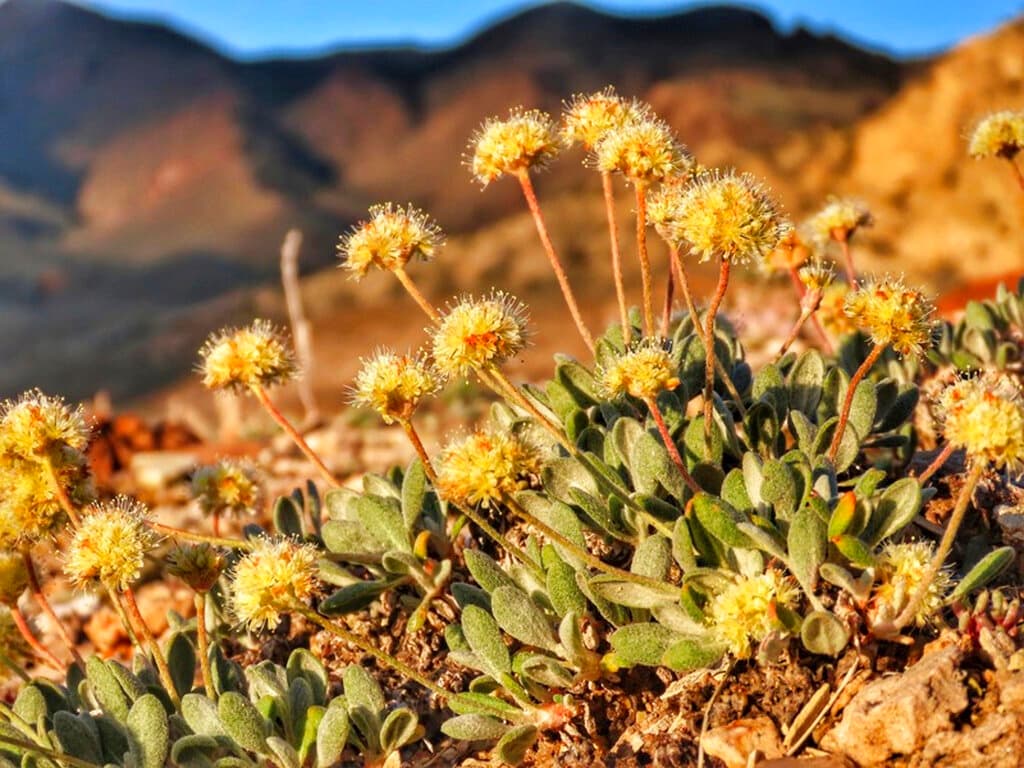‘Endangered’ Listing for Nevada Wildflower Threatens Proposed Lithium Mine in Nevada
America needs lithium mines to compete with China’s dominance of the electric vehicle battery chain, but environmentalists are suing to block those mines.

American wildlife officials declared a Nevada wildflower endangered on Wednesday at the only place it’s known to exist — on a high-desert ridge where a lithium mine is planned to help meet growing demand for electric car batteries.
The Fish and Wildlife Service’s formal listing of Tiehm’s buckwheat and its accompanying designation of 910 acres of critical habitat for the six-inch-tall flower with yellow blooms raises another potential hurdle for President Joe Biden’s “green energy” agenda.
With an estimated remaining population of only about 16,000 plants, the service concluded that Tiehm’s buckwheat is on the brink of extinction.
“We find that a threatened species status is not appropriate because the threats are severe and imminent, and Tiehm’s buckwheat is in danger of extinction now, as opposed to likely to become endangered in the future,” the agency said.
The proposed mine is not the only threat facing the flower. It also is threatened by road-building, livestock grazing, rodents that eat it, invasive plants and climate change, the service said. It said an apparent, unprecedented rodent attack wiped out about 60 percent of its estimated population in 2020.
Lithium is a critical component in modern batteries, especially those for the electric vehicles that many environmentalists are urging more Americans to embrace in the name of combating climate change.
Despite being home to three percent of the world’s reserves, America has only one active lithium mine and is dependent on Chinese supply chains for batteries built from the metal. Several projects aimed at correcting that problem have been hamstrung by lawsuits from environmental groups.
Ioneer, the Australian mining company that’s been planning for years to dig for lithium where the flower grows on federal land halfway between Reno and Las Vegas, says it has developed a protection plan that would allow the plant and the project to coexist.
The listing under the Endangered Species Act, however, subjects the mine to its most stringent regulatory requirement to date. It also underscores the challenges facing the Biden administration in its efforts to combat climate change through an accelerated transition from fossil fuels to renewables.
“Lithium is an important part of our renewable energy transition, but it can’t come at the cost of extinction,” said Patrick Donnelly, Great Basin director for the Center for Biological Diversity, which petitioned for the listing in 2019 and sued last year to expedite the plant’s protection.
Ioneer said the decision “provides further clarity for the path forward” and is “fully in line with Ioneer’s expectations” for development of the mine site at Rhyolite Ridge in the Silver Peak Range west of Tonopah near the California border.
“We are committed to the protection and conservation of the species and have incorporated numerous measures into our current and future plans to ensure this occurs,” Ioneer managing director, Bernard Rowe, said in a statement.
“Our operations have and will continue to avoid all Tiehm’s buckwheat populations,” he said.
The service’s final listing rule will be published Thursday in the Federal Register.
The conservationists who sued to protect the plant insist that Ioneer’s mitigation plan won’t pass legal muster. They pledge to resume their court battle if necessary to protect the buckwheat’s habitat from the rush to develop new lithium deposits.
The flowers are found on a total of just 10 acres spread across about three square miles. Federal agencies are prohibited from approving any activity on federal lands that could destroy, modify or adversely affect any listed species’ critical habitat.
Mr. Donnelly said the company’s latest operations plan for the first phase of the mine proposes avoiding a “tiny island of land” containing 75 percent of its population — surrounded by an open pit mine and tailings dumps within 12 feet of the flowers.
The Bureau of Land Management is reviewing the environmental impacts of Ioneer’s latest operations and protection plans.
Mr. Donnelley noted that the Fish and Wildlife Service estimated in Wednesday’s final listing rule that the proposed scenario would “disturb and remove up to 38 percent of the critical habitat for this species, impacting pollinator populations, altering hydrology, removing soil and risking subsidence.”
“Ioneer’s ‘Buckwheat Island’ scenario would spell doom for this sensitive little flower,” Donnelly said.
The mine is among several renewable energy-related projects facing legal or regulatory challenges in Nevada. They include another lithium mine proposed near the Oregon border and a geothermal power plant where the Dixie Valley toad has been declared endangered in wetlands about 100 miles east of Reno.
“Now that the buckwheat is protected, we’ll use the full power of the Endangered Species Act to ensure Ioneer doesn’t harm one hair on a buckwheat’s head,” Mr. Donnelly said.
